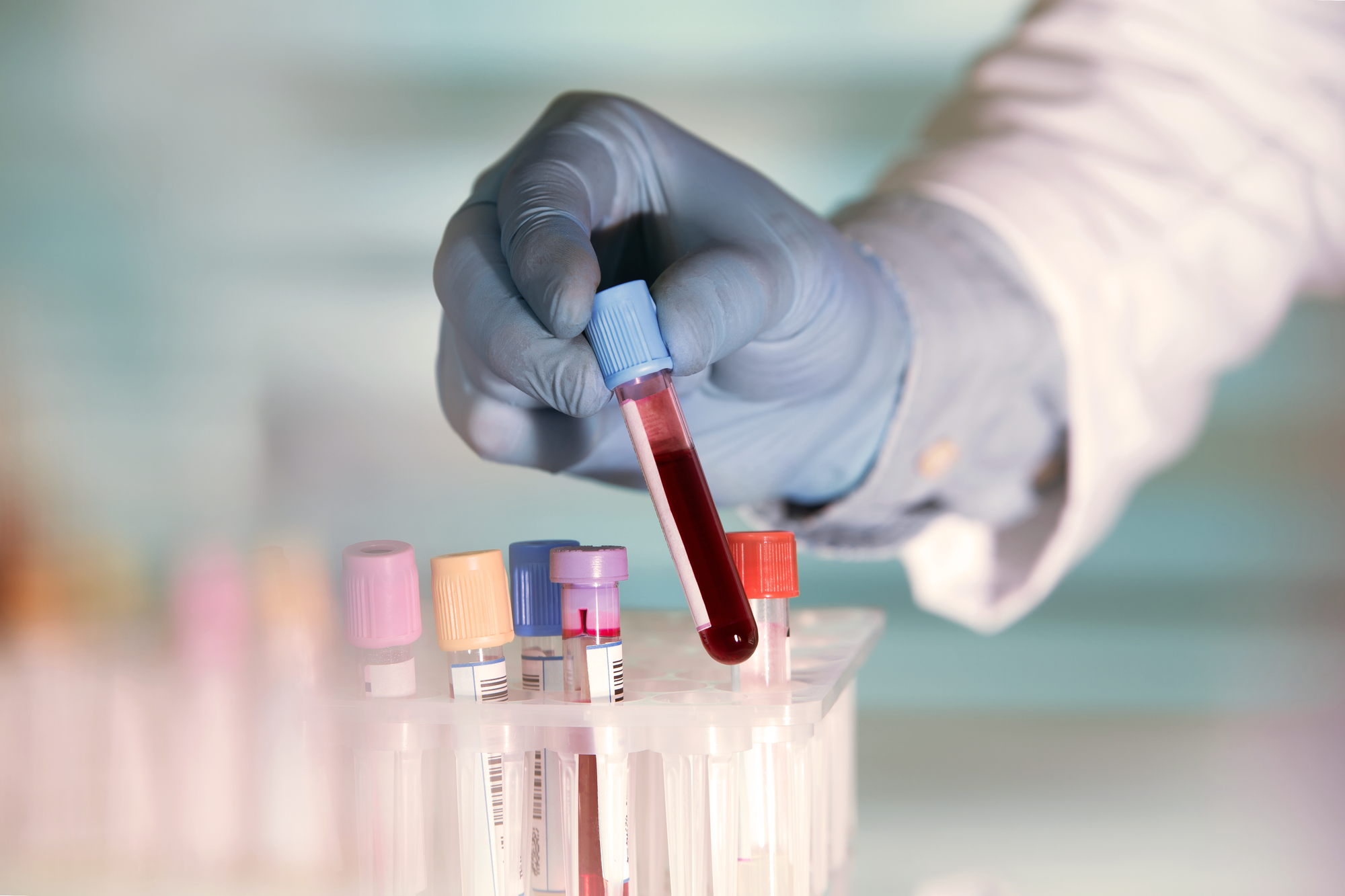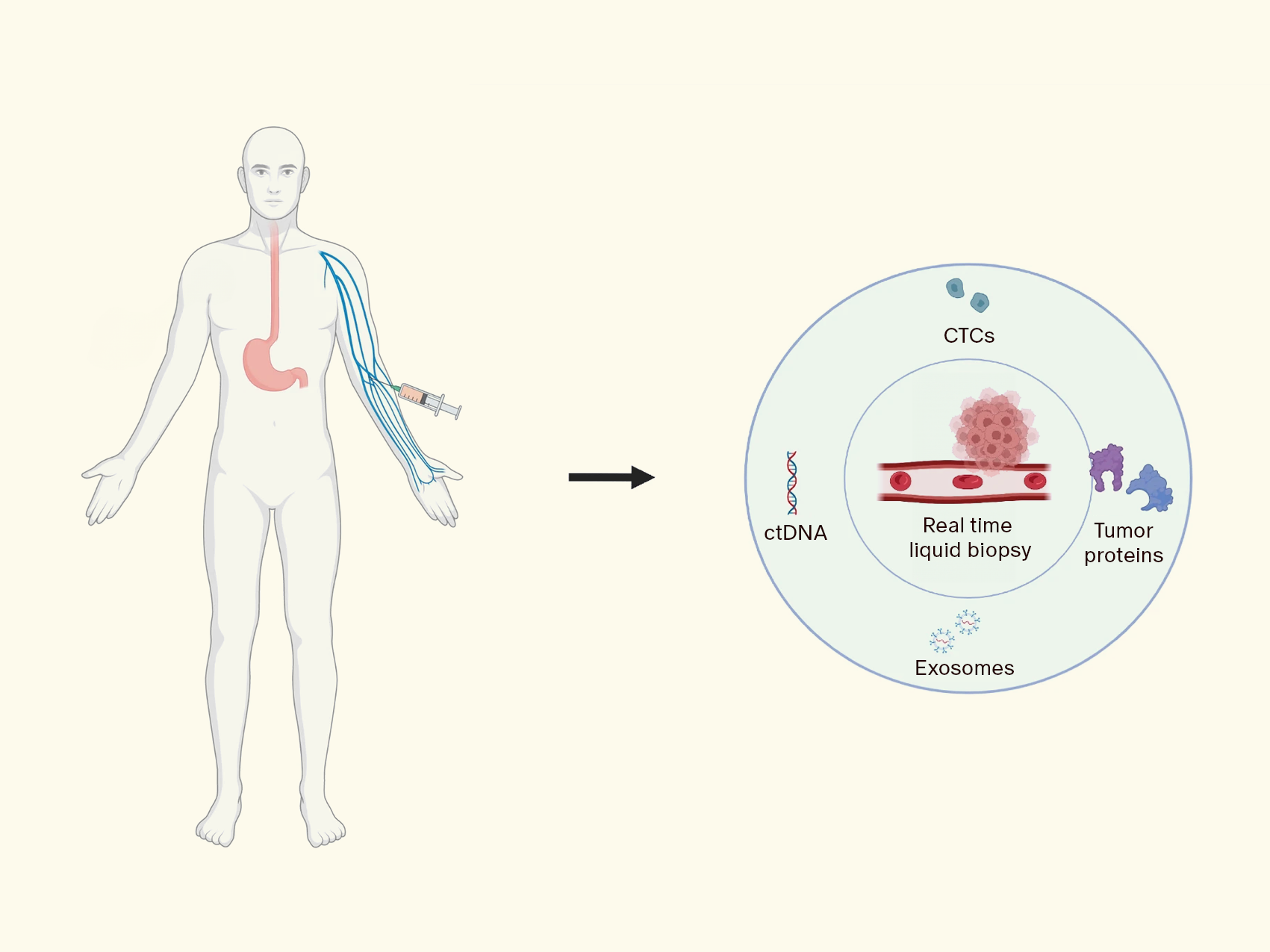Liquid biopsy offers a non-invasive way to detect, monitor, and treat cancer by analyzing tumor markers in blood.
Cancer is one of the leading causes of death worldwide. In 2020, there were 10 million deaths due to cancer, with approximately 19.3 million new cases reported each year. Cancer accounts for about one in six deaths. Detecting aggressive tumors at an earlier stage can enable more effective cancer therapy. This not only improves the quality of life for cancer patients but also increases survival rates for many types of tumors.
Cancer diagnoses are often made through biopsies, where a sample is taken from the suspicious tissue. This is usually a complex and invasive procedure that must be performed by a specialized doctor and is only done if there is a justified suspicion of cancer. Liquid biopsy allows for simplified early cancer detection and can be performed much faster and with less risk compared to traditional biopsies.
In the following article, we provide an overview of how liquid biopsy works, when it is used, and the advantages it offers over tissue biopsy.

What is Liquid Biopsy?
Liquid biopsy is a lab test in which cellular components from bodily fluids (mostly blood) are analyzed for tumor-specific markers released by cancer cells.
The tumor-specific markers obtained through liquid biopsy have various applications in oncology. They are particularly promising for diagnosing different types of cancer before the patients themselves notice any symptoms. Additionally, liquid biopsy offers new perspectives for assessing treatment response and prognosis and provides a promising approach to personalized cancer medicine.
How Does Liquid Biopsy Work?
After a blood sample is taken, it is analyzed to detect circulating tumor cells or tumor DNA in the blood.
- Circulating Tumor Cells (CTCs): Circulating tumor cells (CTCs) are malignant cells released by tumors into the bloodstream. They travel through the blood or lymphatic system to other parts of the body and can cause metastases in distant regions. The number of detectable CTCs depends on several factors, including the type of tumor, the tumor stage, and the methods of examination.
- Cell-Free DNA (cfDNA): Cell-free DNA (cfDNA) are DNA fragments released into the bloodstream as degradation products from both tumor cells and healthy cells. Blood tests can measure cfDNA to detect tumors at an early stage as well as treatment responses and recurrences.
In addition to tumor cells and cell-free DNA, other markers such as cell-free mitochondrial tumor RNA (cfmiRNA) or exosomes can also be used for early detection and monitoring of cancer.

Applications of Liquid Biopsy

The techniques used in liquid biopsy have advanced significantly in recent years. Below is an overview of some of its various applications:
- Early Tumor Detection: Liquid biopsy can detect certain types of tumors at an early stage when they often do not yet cause symptoms and are therefore not noticed by the patients. This is particularly important as most tumors are much more treatable and potentially curable at early stages.
- Tumor Characterization: Knowledge of the detailed molecular tumor profile is crucial for optimal therapy planning. Traditional single tumor biopsy samples can lead to misjudgments of tumor genomics due to tumor heterogeneity.
- Treatment Response: Liquid biopsy can be used as a tool for early assessment of treatment response and has the potential to complement traditional imaging studies.
- Prediction: Determining which patients will benefit from a therapy is important for therapeutic decision-making. For example, it has been shown that tumor mutation burden detected by next-generation sequencing of tumor tissue correlates with response to immune checkpoint inhibitors and can provide important information regarding treatment response.
- Analyzing Treatment Options: Identifying treatable changes in tumors is crucial for a precision medicine approach. While this information has traditionally been obtained from invasive tissue biopsies, information from liquid biopsy proves to be potentially very valuable. There are already several FDA-approved tests used for non-small cell lung cancer and breast cancer.
Which Types of Cancer Can Be Detected with Liquid Biopsy?
Liquid biopsy can detect various types of cancer, though not all with the same accuracy:
- Lung cancer (non-small cell lung carcinoma (NSCLC))
- Breast cancer (mammary carcinoma)
- Bile duct carcinoma (cholangiocarcinoma)
- Colorectal cancer (colorectal carcinoma)
- Prostate cancer (prostate carcinoma)
- Bladder cancer (urothelial carcinoma)
- Thyroid cancer
Advantages of Liquid Biopsy
- Minimally invasive
- Low risk
- Repeatable sampling
- Alternative for hard-to-reach tumors
- Comprehensive tumor characterization
- Earlier detection of recurrences and therapy resistance
- Quickly available results
Minimally Invasive Procedure
Since liquid biopsy involves taking a blood sample instead of a tissue sample, the procedure can be done minimally invasively and without anesthesia. Especially with more complex screening methods, such as a colonoscopy, it may be possible in the future to perform a liquid biopsy first to indicate the need for a colonoscopy.
Low-Risk Method
Since liquid biopsy is a simple blood draw, it is suitable for cancers where traditional tissue biopsy can be risky, such as brain tumors. Additionally, liquid biopsy is less painful and carries fewer risks such as bleeding or tumor cell dissemination.
Repeatable and Serial Sampling
Since liquid biopsy is a simple blood test, samples can be taken regularly. This makes the method very suitable for monitoring the course of diseases. Serial sampling can help to detect changes in the tumor profile early and adjust the treatment strategy accordingly. For example, after chemotherapy, regular invasive procedures are not planned to check for new variants that might lead to resistance.
Alternative for Hard-to-Reach Tumors
For some tumors, especially those located in hard-to-reach areas of the body or too small to be identified with traditional imaging methods, liquid biopsy can be a valuable alternative to tissue biopsy.
Comprehensive Tumor Characterization
Liquid biopsy enables a comprehensive characterization of the tumor at the molecular level by analyzing circulating tumor cells, cell-free DNA, RNA, exosomes, and other markers. This holistic view allows doctors to get a more accurate picture of how cancer is developing and whether it is resistant to certain treatments, leading to a personalized and more effective treatment strategy. Furthermore, the analysis of tumor-specific markers is not limited to the tumor's location.
Earlier Detection of Recurrences and Therapy Resistance
Regular monitoring with liquid biopsy can detect recurrences and the development of therapy resistance early, even before clinical symptoms appear or tumors become visible with imaging techniques. This allows timely adjustment of the treatment strategy to achieve the best possible clinical benefit for the patient.
Quickly Available Results
With a tissue biopsy, tissue is first taken, usually prepared, sliced, and then analyzed. With a liquid biopsy, cell-free DNA can be isolated immediately after sample collection, and circulating tumor DNA can be searched for. Therefore, results are often available much faster than with a tissue biopsy.
A combination of magnetic resonance imaging (MRI) and liquid biopsy can be a very good monitoring combination. While liquid biopsy provides detailed molecular information about the tumor and its genetic properties, MRI offers high-resolution imaging of the structure, size, and spread of the tumor in the body. (link to MRI 101).
How Successful Is Liquid Biopsy in Detecting Cancer?
The success rate of detecting cancer with liquid biopsy varies depending on the type of cancer. According to clinical studies, the best results are achieved by combining multiple tumor-specific markers. Sensitivity ranged from 33% to 98% for cancers of the ovaries, liver, stomach, pancreas, and esophagus.
A study conducted in the USA focused on developing and evaluating a non-invasive blood test called CancerSEEK to detect eight common types of cancer: ovarian, liver, stomach, pancreatic, esophageal, colorectal, lung, and breast cancer. The test combines the assessment of circulating protein biomarkers and tumor-specific mutations in circulating DNA.
Based on this study, the detection success rates for each type of cancer were as follows:
| Cancer Type | Sensitivity |
|---|---|
| Ovarian | 98% |
| Stomach | 83% |
| Esophageal | 83% |
| Colorectal | 71% |
| Liver | 69% |
| Lung | 45% |
| Breast | 33% |
Conclusion
Liquid biopsy has the potential to fundamentally change cancer diagnosis and therapy. Given the alarming statistics on cancer prevalence and mortality worldwide, the significance of this innovative technology cannot be underestimated.
By analyzing cellular components from bodily fluids such as blood, tumor-specific markers can be identified that provide insights into the presence and course of cancer. From diagnosis to monitoring therapy resistance, liquid biopsy offers a non-invasive, low-risk, and regularly applicable alternative to traditional tissue biopsy.
Liquid biopsy also opens up new possibilities for early cancer detection by potentially uncovering even pre-cancerous stages. Despite its numerous advantages, it cannot completely replace tissue biopsy but should be considered a complementary method to improve the accuracy and efficiency of cancer diagnosis.






